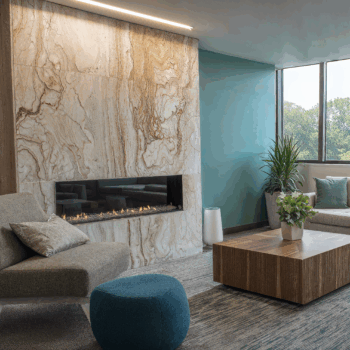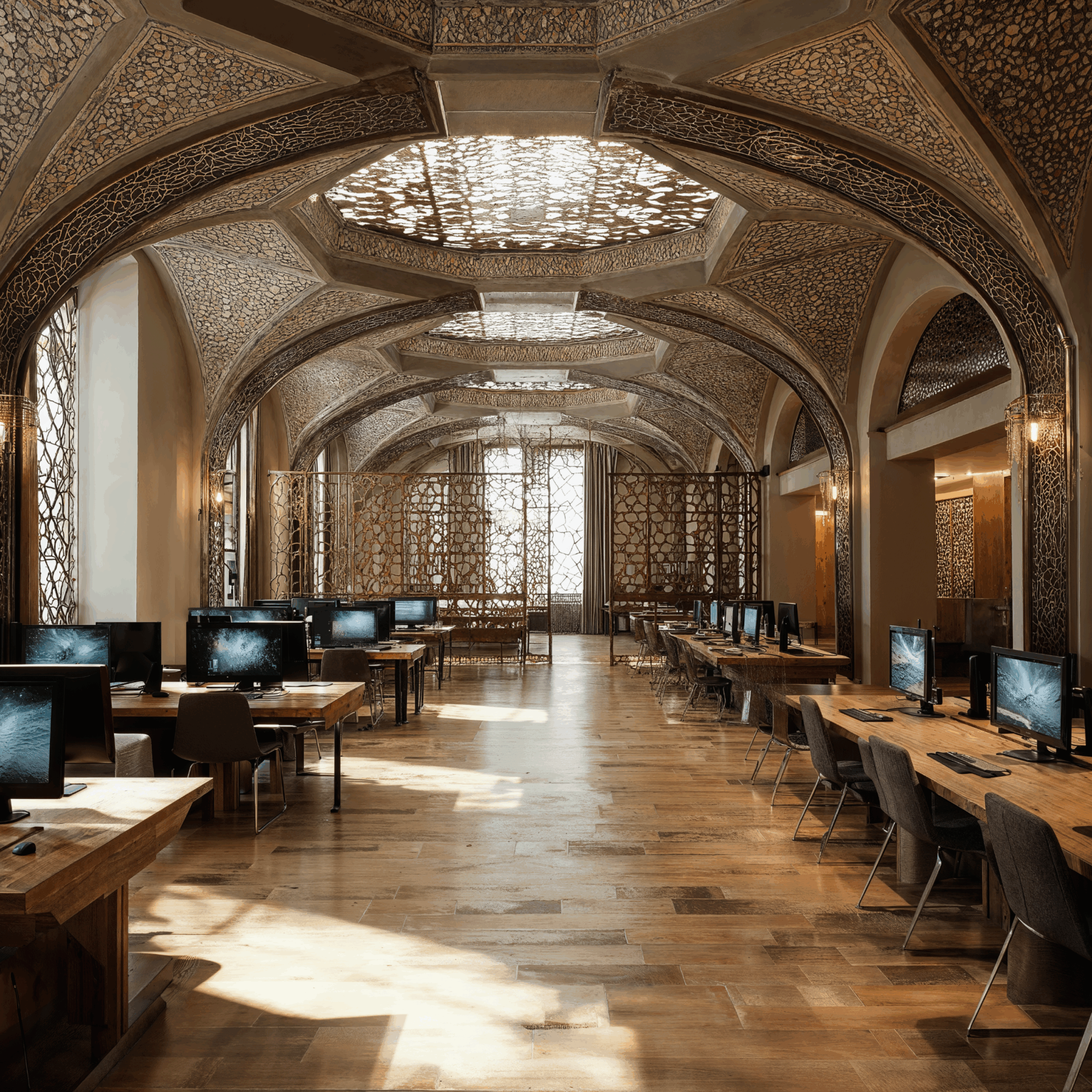
Ottoman Turkish design emerged during the height of the Ottoman Empire, a period marked by extensive cultural exchange and artistic innovation. Drawing from Islamic, Byzantine, Persian, and local Anatolian traditions, the style is known for its grand architectural scale, intricately patterned surfaces, and masterful use of light and shadow. From palaces and mosques to urban courtyards and hammams, Ottoman-era design reflects a deep engagement with geometry, nature, and the expression of cultural identity through built form.
Core features of this style include arched thresholds, domed ceilings, muqarnas (stalactite-like detailing), and richly decorated interiors featuring hand-painted tile, inlaid wood, and gilded accents. Materials such as Iznik tile, silk textiles, and carved stone create immersive, multi-sensory environments. Today, Ottoman Turkish principles inform modern interiors that blend historical richness with contemporary restraint—especially in wellness spaces, cultural buildings, and residential projects that celebrate beauty, craft, and cultural continuity.
The Core Principles of Ottoman Turkish Design
1.) Architectural Ornament
From muqarnas to arabesques, ornament is integrated into structure. Decorative motifs—often geometric or botanical—create visual rhythm while reflecting cultural symbolism and mathematical precision.
2.) Layered Materiality
Tile, carved stone, wood inlay, and silk textiles form a complex material palette. Contrasts between matte and gloss, warm wood and cool ceramic evoke richness without excess.
3.) Monumental Scale and Proportion
Domes, columns, and wide thresholds shape interiors with grandeur, yet attention to human scale ensures balance. Height and symmetry guide spatial organization and ceremony.
4.) Cultural Fusion
Ottoman design embraces influence—from Persian calligraphy to Mediterranean mosaic—creating a visual language that honors coexistence, trade, and shared history.
5.) Light and Shadow
Filtered light through screens, lattices, or clerestory windows animates surface detail and enlivens interiors, allowing spaces to shift throughout the day.
Ottoman Turkish Design in Practice
Cultural Institutions with Historic Reference
Places of worship, museums, and galleries nod to Ottoman design through patterned ceilings, arches, and tiled accents that celebrate regional heritage and architectural splendor.
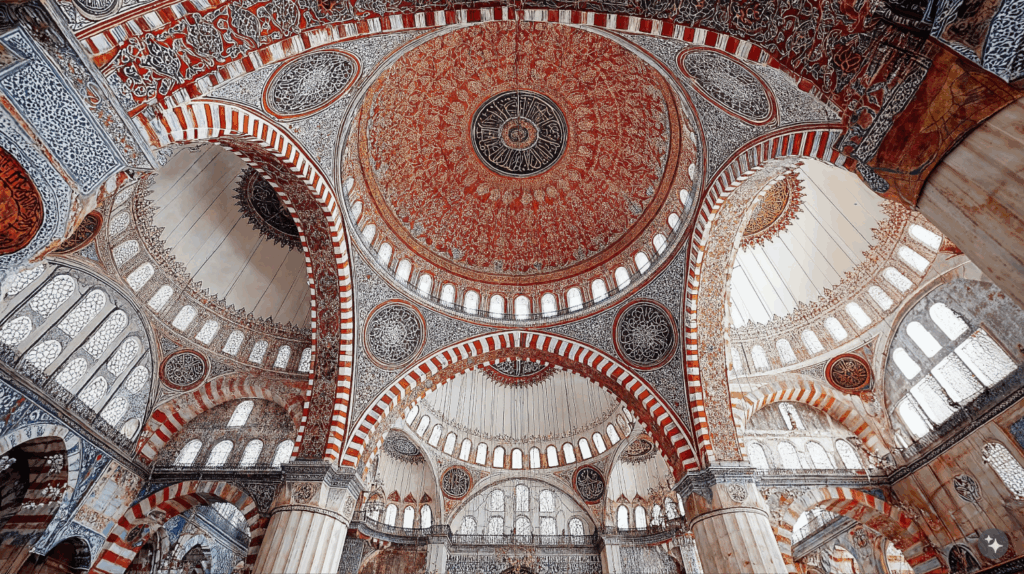
Residential Interiors with Layered Warmth
Modern homes reimagine Ottoman style with ornamental tiles, handwoven textiles, and carved wood furnishings that evoke comfort and cultural identity.
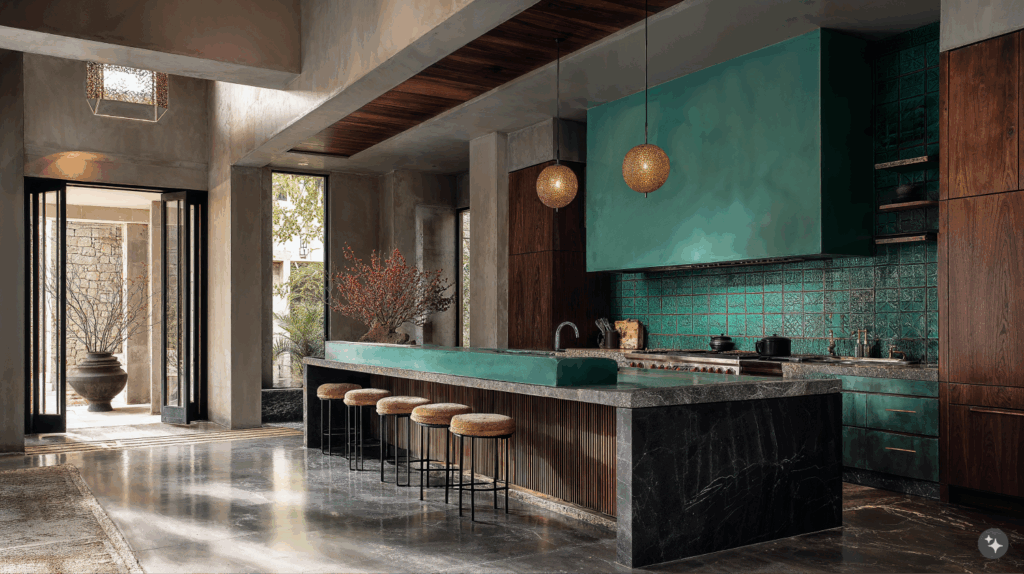
Hospitality Spaces with Decorative Immersion
Hotels, lounges, and hammams draw on Ottoman motifs—mosaic tile, brass fixtures, and domed ceilings—to create immersive, wellness-centered environments.
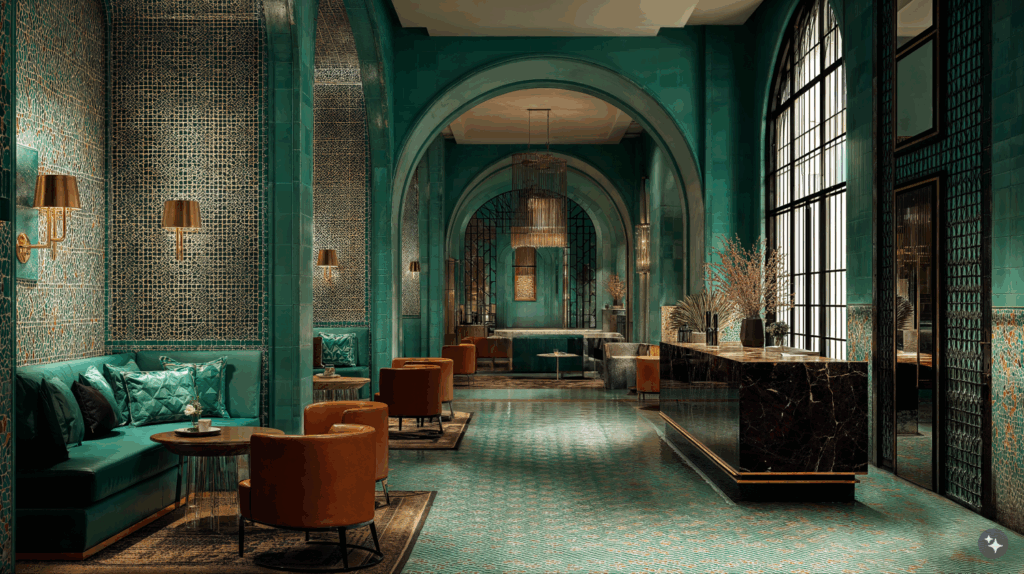
Retail Spaces with Artistic Identity
Boutique shops use geometric patterns, inlay work, and warm wood finishes to frame artisanal goods and tell stories of craftsmanship and cultural roots.

Educational Environments with Material Heritage
Computer labs, libraries, and learning centers integrate ornamental wood, tiled niches, and daylighting strategies that nod to intellectual tradition and design clarity.

Ottoman Turkish design offers a timeless model of beauty through structure, ornament, and cultural fusion. By integrating traditional materials, symbolic geometry, and richly scaled interiors, today’s designers can create environments that feel both rooted and refined, spaces where heritage is not preserved in the past but reimagined for modern use.
Looking for outdoor living design inspiration? Check out our article on Modern Outdoor Patios.






